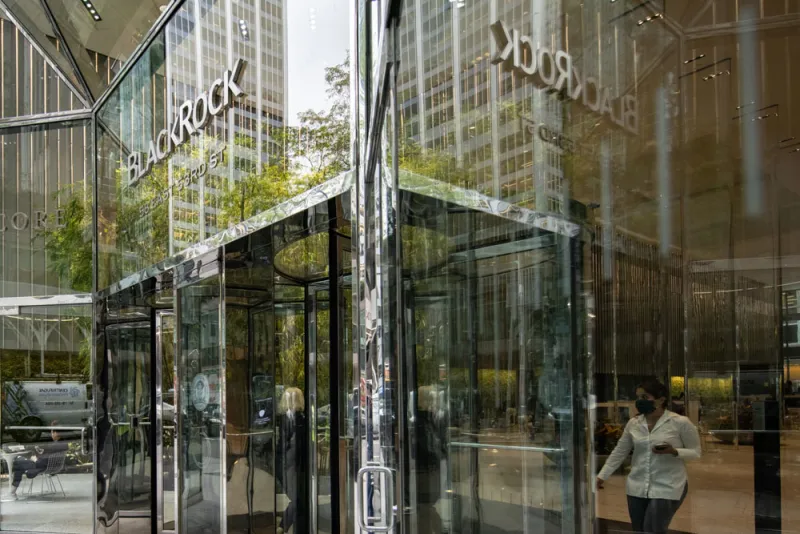The 500 largest asset managers in the world hit a new record in assets under management, with alternative investments growing almost 20 percent. In fact, alternative managers are overtaking traditional ones in the public markets, with Blackstone’s market capitalization surpassing that of BlackRock at the end of September, according to data compiled by CL-Media. But BlackRock is still the largest global firm when measured by assets under management.
The largest 500 firms in the world collectively managed $119.5 trillion at the end of 2020, up 14.5 percent from the year before, according to a new analysis from Willis Towers Watson’s Thinking Ahead Institute.
“The majority of the influence comes from where the markets are,” Roger Urwin, WTW’s global head of investment content, told Institutional Investor. “2020 was a year in which markets powered down in the first six months and then powered up in the last six months. And they finished significantly ahead. The influence of good market returns was bound to wash through the assets of all the organizations.”
Not surprisingly, the asset class mix of managers is changing to meet the demands of their clients — asset owners. According to the report, stocks represented 44.1 percent of the assets that managers oversee, followed by fixed income at 35.6 percent. The combination of the two rose 16.4 percent between 2019 and 2020.
“That reflects the opportunities in the investment world,” Urwin said.
Managers reported that alternative assets grew the most. From 2019 to 2020, alternatives rose 19.8 percent. Alternative assets include private real estate, private equity, and real assets.
“Over the last decade or so, allocations to private assets have been a few percentage points-per-year higher than the allocations to equities and fixed income. So there’s been a stretching of the figures for the whole of the alternative sector,” said Urwin.
Urwin said the key driver of this push toward alternative allocation is asset owners’ appetite for maintaining the level of returns they’ve achieved in the past. In the current low interest rate environment, investors expect lower future returns for listed markets.
“Historically, low interest rates are equivalent to expecting low returns on all assets,” Urwin said. “It’s the alternative sector that’s seen as the highest-returning opportunity. Yes, you may take more risks with those assets, but asset owners who need to secure their solvency are very keen to work with risk.”
Alternative Managers Trump the Traditional
Blackstone’s market cap was $140.5 billion, compared to BlackRock’s $128.4 billion as of the end of September, despite managing far less in assets. But Blackstone’s larger market cap reflects the fact that investors pay more for alternatives than they do for stock and bond funds. Eight of the world’s 10 largest publicly traded standalone asset managers are now alternatives specialists, according to CL-Media.
“The data, especially the top-10 ranking, reflects strong demand for private markets assets, the growing power of alternative managers, and the ability of those firms to generate higher fees than traditional managers who focus on publicly traded stocks and bonds,” Richard Chimberg, partner and co-founder of CL-Media, said in an email.
Out of the 500 largest firms analyzed by WTW, the top 20 asset managers in the world are getting stronger. According to WTW’s report, the top 20 managers’ share of total global AUM increased to 44 percent at the end of 2020, a one percentage point bump from 2019’s share. Fourteen U.S. firms in the top 20 manage managed 78.6 percent of total assets. The remainder are based in Europe. Franklin Templeton and Natixis Investment Managers are new to the top 20. In 2020, Invesco and Wellington Asset Management dropped out of the top 20.
Out of the top 20 managers, 11 are independent asset managers, seven are banks, and two are insurer-owned managers.
“These organizations include quite a lot of the passive portfolios, and we know that passive portfolios have been growing throughout this period,” Urwin said. “More allocations have been to passive strategies and systematic investment strategies. These organizations tend to be the organizations that have a big weighting to passives because passive works well with economies of scale.”
The amount of capital invested in environmental, social, and corporate governance strategies has also increased. In 2018, asset managers invested $.8 billion in ESG mandates. In 2021, managers jumped to $1.3 billion in ESG investments.
“ESG has been a very slow-moving, but unstoppable train for a long time,” Urwin said. “In the last year, there’s been an acceleration to the speed of that train. In our work, we attribute that to increased sensitivity to the interconnectedness of sustainability in the experiences of the pandemic.”
In the future, Urwin said the industry is set for more growth in assets. He and his team of analysts expect another record-breaking year for managers as 2021 comes to a close. But, he said, the record level of returns won’t continue forever. Still, he doesn’t expect investors’ appetite for potentially high-returning alternative assets to slow.
Over the past two decades, asset managers have faced challenges like competition and consolidation, prompting many to evolve their practices and shuffling the list of winners and losers.
“Underneath the numbers, the names have changed,” Urwin said. “Half the group has changed; half has stayed the same. This decade we’ve just been through has had more competition and more changes to the corporate structure and that is generally about consolidation.”







